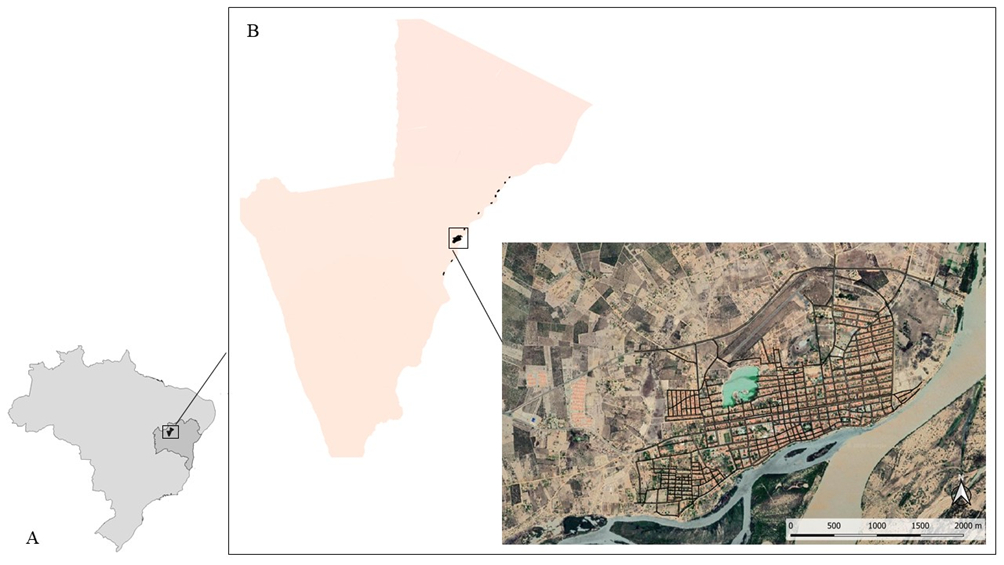Retrospective study of triatomines in an endemic region for Chagas disease in the state of Bahia, Brazil
DOI :
https://doi.org/10.21708/avb.2022.16.2.10473Résumé
Chagas disease is caused by Trypanosoma cruzi, which has several forms of transmission. Among them, the vector route requires the constant action of the Health Surveillance in the control of triatomines. Our objective is to describe the diversity of triatomines and the rate of natural infection by T. cruzi in these insects, as well as to analyse entomological indicators, through secondary data generated by the Health Surveillance of the municipality of Barra, in the period from 2009 to 2019. The secondary data were subjected to descriptive analysis and the entomological indicators calculated. Williams' G test and Fisher's exact test were used to analyse the categorical data. A total of 10,913 triatomines of the genera Rhodnius sp., Panstrongylus sp., Eratyrus sp. and Triatoma sp. were captured, represented by 12 species. Triatoma sordida was the most prevalent 98.66% (10,767/10,913), reflected in the overall infestation index 7.61% (2,555/33,544) and triatomine density 0.24 (8,247/33,544). While the overall infection rate was 0.81% (41/5,048) and remained low during all years. There was significant association for T. sordida in relation to "T. cruzi infection index" and "Developmental stage" and "Capture site". It is concluded that the municipality of Barra has a high occurrence of triatomines of various species, with T. sordida being the most prevalent species and responsible for the rates of infestation and infection by T. cruzi. The presence of these insects in households is a risk for the domestic cycle of the parasite, and thus can transmit T. cruzi to various domestic animals, including humans.
Téléchargements

Téléchargements
Publié-e
Numéro
Rubrique
Licence
(c) Tous droits réservés Acta Veterinaria Brasilica 2022

Cette œuvre est sous licence Creative Commons Attribution 4.0 International.
Autores que publicam na Acta Veterinaria Brasilica concordam com os seguintes termos: a) Autores mantém os direitos autorais e concedem à revista o direito de primeira publicação, com o trabalho simultaneamente licenciado sob a Licença Creative Commons Attribution que permite o compartilhamento do trabalho com reconhecimento da autoria e publicação inicial nesta revista. b) Autores têm autorização para assumir contratos adicionais separadamente, para distribuição não-exclusiva da versão do trabalho publicada nesta revista (ex.: publicar em repositório institucional ou como capítulo de livro), com reconhecimento de autoria e publicação inicial nesta revista. c) Autores têm permissão e são estimulados a publicar e distribuir seu trabalho online (ex.: em repositórios institucionais ou na sua página pessoal) a qualquer ponto antes ou durante o processo editorial, já que isso pode gerar alterações produtivas, bem como aumentar o impacto e a citação do trabalho publicado (Veja O Efeito do Acesso Livre).


 Esta obra está licenciada com uma Licença
Esta obra está licenciada com uma Licença 